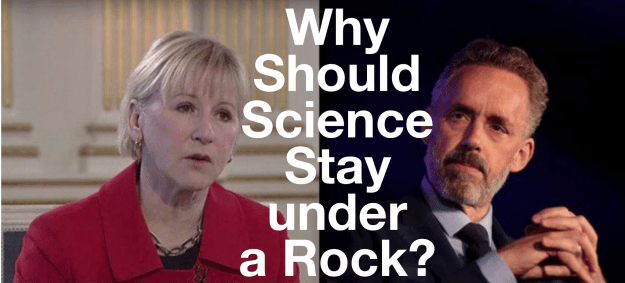The rise of ’Black Lives Matter’, ‘I Can’t Breath’ (https://youtu.be/7Hj__JaNBI4), ‘Anti-Slave’ and ‘Anti-Racism’ demonstrations (https://www.cnn.com/2020/06/07/world/global-floyd-protests-weekend-intl/index.html; https://www.marketwatch.com/story/george-floyd-demonstrations-across-europe-grow-larger-and-louder-2020-06-07) around the world uncovered various socio-economic realities and disparities. These represent future challenges that are imperative for promoting and achieving sustainable societies. As by today, it is not straightforward, even in higher education and developed economies, to realise and grasp the involved dimensions associated with the inconvenient truth about how minorities, including blacks, immigrants and less favoured groups (https://socialsci.libretexts.org/Bookshelves/Sociology/Book%3A_Minority_Studies_(Dunn)/02%3A_Dominant_and_Minority_Groups/2.01%3A_Dominant_and_Minority_Groups) may still feel or experience disparities in modern societies including Europe e.g. UK (https:www.timeshighereducation.com/blog/why-my-professor-still-not-black); Sweden (https://liu.se/en/article/svart-i-sverige). The stories that, to some extent, still remain to be part of our social heritage are rooted in many underlying historical and cultural events about racism, as documented and explained in Science. The sociocultural and socio-economic stratification of historical roots are still causing and promoting socio-economic barriers and hinders for inclusive integration and assimilation. Remedies and mitigations are well described in the Paris agreement of 2016 which was signed by the international community, i.e. the UN-SDGs compromising 17 goals for the prosperity and well-being on planet Earth (https://www.un.org/development/desa/disabilities/envision2030.html). Michael E. Ruane, a graduate of Harvard University and reporter at the Philadelphia Bulletin and Washington Post writes “Such thought exists today with pernicious assumptions about the current nature of black life and black people, still featuring age-old racist references to blacks as animals. It persists despite the advent of modern DNA science, which has shown race to be fundamentally a social construct. Humans, as it turns out, share about 99.9 percent of their DNA with each other, and outward physical characteristics such as hair texture and skin color, about which racists have long obsessed, occupy just a tiny portion of the human genome” (https://www.washingtonpost.com/local/a-brief-history-of-the-enduring-phony-science-that-perpetuates-white-supremacy/2019/04/29/20e6aef0-5aeb-11e9-a00e-050dc7b82693_story.html). Until early 20th century the thoughts of Louis Agassiz, the famous Swiss American scientist and Harvard professor, who was studying what was called polygenism, and the New York lawyer and racial theorist named Madison Grant pointed that “blacks were often situated along the evolutionary ladder midway between a classical ideal and the orangutan”. Grant, whose father, a Union army doctor, had earned the Medal of Honor in the Civil War, believed in a rigid racial hierarchy, with “nordics” at the top and blacks and others at the bottom. It was not until 1936, when the African American sprinter Jesse Owens smashed the ideas of Hitler and Madison when he won four gold medals at the Berlin Olympics. But Owens’s own track coach belittled the success of black runners: “It was not long ago that his ability to sprint and jump was a life-and-death matter to him in the jungle.”
The historian Ibram X. Kendi says “What black inferiority meant has changed in every generation . . . but ultimately Americans have been making the same case and even when “Americans have discarded old racist ideas, new racist ideas have constantly been produced for their renewed consumption” and some day the time will come “when Americans will realize that the only thing wrong with black people is that they think there is something wrong with black people.” Ibram X. Kendi, Ph.D. in African American Studies in 2010, Temple University, USA and a leading scholar of race and discriminatory policy in America.
The growing blind fear for the collapse of modern ’economic’ democracies because of the major failure of integration policies in the US and Europe, caused serious political conflicts in Europe and call for military domination in the US against protesters (https://www.democracynow.org/2020/6/2/trump_insurrection_act_military_against_protests; https://www.dn.se/ledare/peter-wolodarski-det-ar-sa-har-demokratier-dor/). Also, the shortsighted economic growth in Europe, that doesn’t promote the UN-SDGs (except what regards one goal, i.e. Climate Action), has triggered major refugee crises in 2015 and 2016 consisted primarily of a sharp rise in the number of people coming to Europe to claim asylum. Arrivals have now dropped, and governments have cracked down on the movement of undocumented migrants within the EU; many thousands are stuck in reception centres or camps in e.g. southern Europe, while others try to make new lives in the places they have settled (http://www.theguardian.com/news/audio/2018/jun/25/five-myths-about-the-refugee-crisis-podcast). Interestingly, the refugee crisis itself resulted from series of wars, e.g. Gulf war in 1991 (https://www.thebalance.com/cost-of-iraq-war-timeline-economic-impact-3306301; https://en.m.wikipedia.org/wiki/Refugees_of_Iraq) based on false beliefs about weapons of mass destruction and triggered a spiral of political conflicts and instabilities caused by sanctions against Iraq, violence during and after the American-led invasion and occupation. It is also well-known and well-documented how Africas colonial history has affected its socio-economic developments (https://www.weforum.org/agenda/2015/07/how-africas-colonial-history-affects-its-development/; https://unesdoc.unesco.org/ark:/48223/pf0000065575) and still remains to be a major underlying obstacle for building sustainable labour market specially for the Africas young population.
Socio-economic disparities existing in the labour market promote toxic cultures in workplaces on micro and macro scales. They are plagued by fighting, drama and unhappy employees to the point that productivity and the well-being of the people in the office is affected. There are seven major signs of toxic culture to look out for in your workplace (https://inside.6q.io/toxic-work-culture/). On the large-scale and long-term these trigger enormous damage not only for work places but for communities and the society as a whole. They can be hidden for long-time and can show up at anytime with different consequences and impacts (https://www.nytimes.com/2020/06/08/business/media/refinery-29-christene-barberich.html; https://www.google.se/amp/s/amp.theguardian.com/media/2020/jun/09/editors-resign-us-publications-accusations-racist-toxic-culture). The victims of a toxic work culture are often the employees in particular those belonging to minority group such as immigrants and out-sourced workers specially to foreign (offshoring or nearshoring) businesses (https://yaro.blog/2641/is-outsourcing-exploitation/).
When and how we will be able to integrate the seventeen UN-SDGs in all sector activities around the world remains to be imperative. Unfortunately most of the focus still put on one Goal, i.e. Climate Action, which indeed is far from being enough to achieve prosperity, security and safety on planet earth.




 © UNICEF/UNI169762/ClarkBaby Abinet, 3 months old and suffering from pneumonia, at the Hamido health post in Ethiopia. 2014
© UNICEF/UNI169762/ClarkBaby Abinet, 3 months old and suffering from pneumonia, at the Hamido health post in Ethiopia. 2014
















